I recently bought a D3100 and I have tried changing/playing around with everything, but my photos are still blurry. I have an 18-55mm lens. All I want to do is take pictures of my daughter, but she is never quite in focus, while the background is crystal clear.
Navigation
Install the app
How to install the app on iOS
Follow along with the video below to see how to install our site as a web app on your home screen.

Note: This feature currently requires accessing the site using the built-in Safari browser.
More options
You are using an out of date browser. It may not display this or other websites correctly.
You should upgrade or use an alternative browser.
You should upgrade or use an alternative browser.
Nikon D3100 and blurry photos
- Thread starter mmal
- Start date
- Joined
- Mar 8, 2011
- Messages
- 25,157
- Reaction score
- 9,010
- Location
- Iowa
- Website
- pixels.com
- Can others edit my Photos
- Photos NOT OK to edit
Is the auto-focus turned on?
Stradawhovious
Been spending a lot of time on here!
- Joined
- Nov 8, 2010
- Messages
- 3,241
- Reaction score
- 911
- Location
- Minneapolis, MN
- Can others edit my Photos
- Photos OK to edit
A couple of things without being able to see pics...... first, try setting your camera to single-point focus. Many times with a billion and one focus poinfs the camera is forced to decide what to focus on based what it perceives your subject to be. It will pick the wrong thing and voila! Blurry subject.
Net thing would be to post some pics so the folks that are infinitely more knowledgeable than myself can give you other advice.
Net thing would be to post some pics so the folks that are infinitely more knowledgeable than myself can give you other advice.
misstwinklytoes
TPF Noob!
- Joined
- Jun 13, 2010
- Messages
- 2,111
- Reaction score
- 40
- Location
- Texas
- Website
- www.etsy.com
- Can others edit my Photos
- Photos OK to edit
Might have too slow of a shutter speed...
- Joined
- Apr 9, 2009
- Messages
- 41,401
- Reaction score
- 5,706
- Location
- Iowa
- Website
- kharrodphotography.blogspot.com
- Can others edit my Photos
- Photos OK to edit
If your backgrounds are crystal clear, but your subject in the foreground isn't, the issue could be:
You might find some helpful information on my blog: How Do I Use My Digital SLR?
- shutter speed is to slow for a moving subject
- subject is in front of the near limit of the depth-of-field (DOF)
- The camera is in the wrong shooting mode for the amount of light that is available
You might find some helpful information on my blog: How Do I Use My Digital SLR?
mayhem7
TPF Noob!
- Joined
- Feb 28, 2011
- Messages
- 48
- Reaction score
- 5
- Location
- Los Angeles
- Website
- www.photo-editing.net
- Can others edit my Photos
- Photos OK to edit
On the pictures you have already taken, that were blurry, maybe these techniques might help? Sharpen-a-blurry-photo.blogspot.com ..
cjf
TPF Noob!
- Joined
- Oct 31, 2011
- Messages
- 7
- Reaction score
- 0
- Location
- Brussels
- Can others edit my Photos
- Photos OK to edit
Hello
I have two subjects in my image: a bag and two small balls. I am able to blur the bag (the background) or the balls (the foreground). But I cannot keep both subjects unblurred. I tried to keep them unblurred by using a large "f" number for the aperture to keep every detail of background and foreground in focus but to no avail. Do I need a tripod when using a small aperture to bring out details in background or foreground? Any possible solutions? My lens is the standard one (18-55) with Nikon D3100.
Where can I attach my photos?
Regards
Claude
I have two subjects in my image: a bag and two small balls. I am able to blur the bag (the background) or the balls (the foreground). But I cannot keep both subjects unblurred. I tried to keep them unblurred by using a large "f" number for the aperture to keep every detail of background and foreground in focus but to no avail. Do I need a tripod when using a small aperture to bring out details in background or foreground? Any possible solutions? My lens is the standard one (18-55) with Nikon D3100.
Where can I attach my photos?
Regards
Claude
- Joined
- Mar 8, 2011
- Messages
- 25,157
- Reaction score
- 9,010
- Location
- Iowa
- Website
- pixels.com
- Can others edit my Photos
- Photos NOT OK to edit
Hello
I have two subjects in my image: a bag and two small balls. I am able to blur the bag (the background) or the balls (the foreground). But I cannot keep both subjects unblurred. I tried to keep them unblurred by using a large "f" number for the aperture to keep every detail of background and foreground in focus but to no avail.
If you're using a small aperture (large number on the lens), you will get a deep depth of field in focus. But you cannot split it into two parts. I'm not sure why you want to keep both subjects blurred.
Do I need a tripod when using a small aperture to bring out details in background or foreground?
Aperture doesn't drive the need for a tripod.... shutter speed and camera movement do.
Any possible solutions? My lens is the standard one (18-55) with Nikon D3100.
Where can I attach my photos?
Click here.
PS, It's considered poor etiquette to create a new subject in an existing thread.
cjf
TPF Noob!
- Joined
- Oct 31, 2011
- Messages
- 7
- Reaction score
- 0
- Location
- Brussels
- Can others edit my Photos
- Photos OK to edit
Hello
Thanks for your reply. I do not want to keep both subjects blurred. I would like to have both subjects in focus.
Please see the following: Journal Studies 2 pictures by claudefalzon - Photobucket
The main problem is: how can I have both subjects i.e. the balls and the bag in focus?
Regards
Claude
Thanks for your reply. I do not want to keep both subjects blurred. I would like to have both subjects in focus.
Please see the following: Journal Studies 2 pictures by claudefalzon - Photobucket
The main problem is: how can I have both subjects i.e. the balls and the bag in focus?
Regards
Claude
MLeeK
TPF Noob!
- Joined
- Oct 20, 2011
- Messages
- 6,761
- Reaction score
- 1,380
- Location
- NY
- Can others edit my Photos
- Photos OK to edit
Part of your problem with the balls and the background object in those images is that you are very close to the "subjects." DOF is controlled by aperture and distance between your camera and the object. If you are very close EITHER in actual distance OR by using zoom, your DOF will get much smaller-less will be in focus.Hello
Thanks for your reply. I do not want to keep both subjects blurred. I would like to have both subjects in focus.
Please see the following: Journal Studies 2 pictures by claudefalzon - Photobucket
The main problem is: how can I have both subjects i.e. the balls and the bag in focus?
Regards
Claude
To use a very small aperture you will need to be in a situation with a LOT of light. As you use the small aperture (in the case of the balls and whatever that is I am guessing f/16 to f/22) you make that opening very small (Think squinting your eyes to focus on something.) When the opening is small, it does not allow a lot of light to flow through. Think faucet-if you open the faucet all of the way up it lets a lot of water through. If you close it down a lot it only lets a little water through.
In order to compensate for that little bit of light flowing through the aperture (hole) it has to get the light some other way. The other way your camera does that is to drop the shutter speed so that it is open for a long time. Back to my faucet if it is open a long time a lot of water flows through. If it is open a little bit of time a little water... Same with how long the shutter is open. BUT if your shutter is open for a longer time there is a chance you or your subject can move. That will result in the movement being caught in your photo. It's then blurry. Even if you THINK you are standing perfectly still, you have vibrations from your hands or even from pressing the shutter button. You can allow the camera to drop the shutter, but you will need a tripod and a trigger and a perfectly still subject.
There is a third answer to some extent. You can raise the ISO. When you raise the ISO (and no, we aren't going to have that argument here about ISO, guys! LOL!) it increases how sensitive your sensor is to the light. It needs less light if it is more sensitive. It also causes noise, so you will want to learn about the controls in depth and how to control that problem.
And the last option is to add light. No camera can shoot in the dark. Every camera and lens has limits as to what it can do. You are probably hitting yours. Especially if you are using a small aperture. That's where flash comes in. Of course the on board camera flash isn't the hottest option out there and it will tend to give you a really harsh look but a speedlight for your camera will allow you some amazing options!
- Joined
- Mar 8, 2011
- Messages
- 25,157
- Reaction score
- 9,010
- Location
- Iowa
- Website
- pixels.com
- Can others edit my Photos
- Photos NOT OK to edit
DOF is dependent on many things..... the aperture, the lens' focal length, the sensor size and the focus point.
For instance, let's say you take your D3100, with the lens set at 50mm. You set the aperture at f/8. What's the DOF? No way to tell without knowing the fourth.... the focus point.
So, let's say you focus the lens at 3 feet. Now the DOF can be calculated.....I come up with 2'-10" to 3'-3". That's only 5" of DOF. If you change nothing but the focus point, the total DOF will change. Let's say, go to 10'. Now you'll get 8'-1" to 13'-2" in focus.... a DOF of more than 5 feet.
Going back to the 3' focus point, changing the aperture to f/16 will increase the DOF to 2"-8" to 3'-6", for a total of 10", not just 5". Stopping down to f/32 will increase it to 2'-4" to 4'-2" (20" total).
For instance, let's say you take your D3100, with the lens set at 50mm. You set the aperture at f/8. What's the DOF? No way to tell without knowing the fourth.... the focus point.
So, let's say you focus the lens at 3 feet. Now the DOF can be calculated.....I come up with 2'-10" to 3'-3". That's only 5" of DOF. If you change nothing but the focus point, the total DOF will change. Let's say, go to 10'. Now you'll get 8'-1" to 13'-2" in focus.... a DOF of more than 5 feet.
Going back to the 3' focus point, changing the aperture to f/16 will increase the DOF to 2"-8" to 3'-6", for a total of 10", not just 5". Stopping down to f/32 will increase it to 2'-4" to 4'-2" (20" total).
cjf
TPF Noob!
- Joined
- Oct 31, 2011
- Messages
- 7
- Reaction score
- 0
- Location
- Brussels
- Can others edit my Photos
- Photos OK to edit
Hello
Thank you for the extensive information regarding aperture and focusing. I was reading about the rule of thirds. I am not sure if the Nikon D3100 has a grid to guide me. Any suggestions?
Best regards
Thank you for the extensive information regarding aperture and focusing. I was reading about the rule of thirds. I am not sure if the Nikon D3100 has a grid to guide me. Any suggestions?
Best regards
- Joined
- Mar 8, 2011
- Messages
- 25,157
- Reaction score
- 9,010
- Location
- Iowa
- Website
- pixels.com
- Can others edit my Photos
- Photos NOT OK to edit
Hello
Thank you for the extensive information regarding aperture and focusing. I was reading about the rule of thirds. I am not sure if the Nikon D3100 has a grid to guide me. Any suggestions?
Best regards
Aperture and focusing have nothing to do with the rule of thirds.
- Joined
- Apr 9, 2009
- Messages
- 41,401
- Reaction score
- 5,706
- Location
- Iowa
- Website
- kharrodphotography.blogspot.com
- Can others edit my Photos
- Photos OK to edit
The D3100 user's manual will describe all the features and functions your D3100 has. I recommend looking in the index.Hello
I am not sure if the Nikon D3100 has a grid to guide me. Any suggestions?
Best regards
It is my understanding the complete user's manual is not included as a hard copy, but is a file on the disc that came with your camera.
Most reactions
-
 432
432 -
 280
280 -
 276
276 -
 265
265 -
 215
215 -
 183
183 -
 176
176 -
 170
170 -
 169
169 -
 167
167 -
 159
159 -
 127
127 -
 115
115 -
I
99
-
 94
94
Similar threads
- Replies
- 11
- Views
- 620

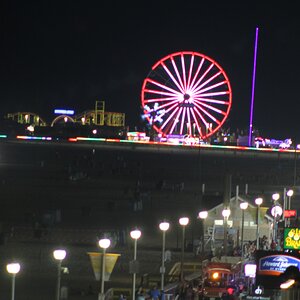

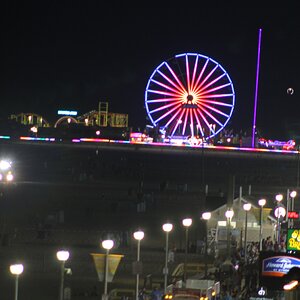
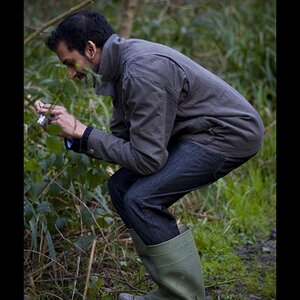
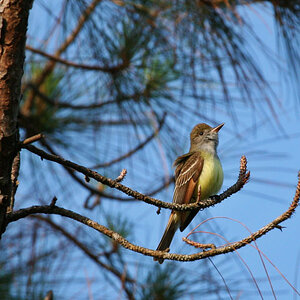
![[No title]](/data/xfmg/thumbnail/30/30991-43abf4dfee0a54010692c71c43f40981.jpg?1619734555)

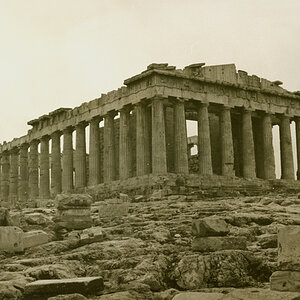
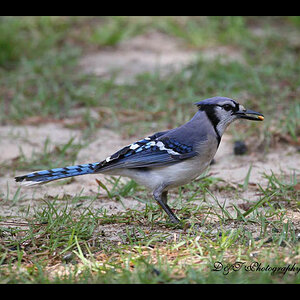

![[No title]](/data/xfmg/thumbnail/31/31096-b9b8d52b45753cd4f9251832149ef9da.jpg?1619734613)
![[No title]](/data/xfmg/thumbnail/30/30987-a33ca8e90b5d786c21e59d37945b9cc6.jpg?1619734552)